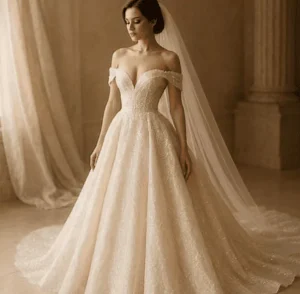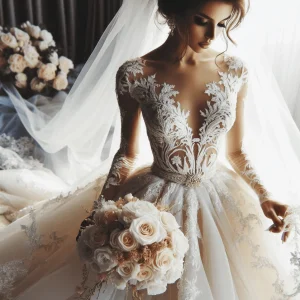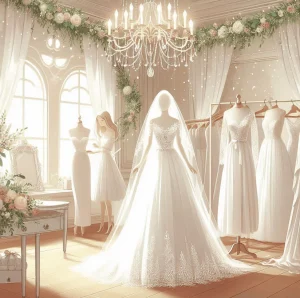Indian Wedding day Customs – Eastern and Western Indian Wedding day Traditions

There is no these types of issue as a common Indian marriage. Stunned? Which is due to the fact in this land of diverse languages and traditions, wedding ceremony customs are similarly various.
Here’s a seem at how men and women residing in the japanese and western locations of India rejoice weddings.
Jap Indian marriages
Japanese Indian wedding ceremonies are not as opulent and extravagant as their North Indian counterparts but are similarly elaborate in their personal way. There are scores of easy but significant rituals, numerous of them extremely interesting and truly rooted in historical logic and reasoning. Weddings in India are also an celebration the place long-shed near mates and relatives bond and share unforgettable times through this satisfied celebration.
The most hanging feature of a Bengali wedding day, nonetheless, is the reality that the groom’s mother does not go to the wedding ceremony! She awaits the happy couple at house, all set to accomplish all the welcoming rituals.
A usual East Indian groom is customarily clad in dhoti and kurta, and he carries a mirror all the time right until marriage ceremony is over. The groom’s occasion is accorded a welcome with fresh new flowers and a great deal blowing of conches by the womenfolk. Rosewater is sprinkled on him and then both equally, the bride and the groom get ready for the actual nuptials. The bride is fantastically dressed in a large red Benarasi saree and wears a form of a crown like a princess. She has sandalwood paste decorations on her forehead and deal with
As a element of the wedding ritual, the bride has to sit on a small wooden stool referred to as pidi that is lifted by her brothers. The bride is then taken around the groom seven occasions in circles by her brothers, signifying their everlasting union. Apparently, all together she shields her eyes from the groom with a betel leaf. The bride then proceeds to sit on a really embellished pidi (small wood stools), equivalent to the a single on which the groom is seated, all through the chanting of the priest. The ladies people collected blow conch shells to mark this remarkably auspicious instant.
This is adopted by the trade of flower garlands in between the bride and groom, to the accompaniment of the chanting if worried mantras (Sanskrit verses). The bride and groom all over again just take 7 steps around the sacred fireplace. The groom then applies vermilion on to his bride’s head, the image of a married lady. Following this, the bride is handed about to the groom by her maternal or paternal uncle.
The newlyweds get to the groom’s dwelling where by a lot more rituals and ceremonies observe. Hiding the rings of the bride and groom, taking part in with a vessel full of rice are some of the wedding day game titles to make the new bride really feel at home.
Curiously, the married few has to keep independently that evening and it is only the upcoming night, soon after all the rituals have lastly been done that they can appreciate conjugal bliss!
West Indian marriages
Western Indian weddings, primarily Maharashtrian weddings, generally just take put in the early morning. Prior to this, the engagement ceremony, recognized as Sakhar Puda (exchanging of a sugar packet) takes spot to formally declare the betrothal.
In the early morning, a puja is carried out to worship Lord Ganesh (the elephant-headed God of prosperity). The groom’s family members arrives in the early morning at both the bride’s residence or the mandap and is taken care of to a lavish breakfast.
Immediately after this, as per the auspicious time previously established in session with a variety of astrological almanacs, the girl’s maternal uncle escorts her to the Mandap (marriage hall). Custom dictates that the female and boy do not see every other whilst the Antarpaat ceremony will take location. In this a silk partition (Antarpaat) is placed in between them. Then the shlokas are chanted by the priest soon after which Antarpaat is taken out. The pals and relatives collected shower unbroken rice on the few as an auspicious indicator. The bride and the groom then trade flower garlands and take the 7 Methods (Saat Pheras) all around the ceremonial holy hearth.
Immediately after the marriage ceremony, yet another puja, known as Laxmi Narayan puja, is held, in which the bride and groom are symbolically worshipped as Goddess Lakshmi (the Goddess of Wealth) and Lord Narayan, respectively. Like in all Indian weddings, the female is then formally ‘handed over’ to the groom by her father or maternal uncle. This ceremony is known as Kanya Daan all across India.
Gujarati wedding ceremonies also start by supplying prayers to Lord Ganesha and seeking his blessings. Usually, the bride and the groom exchange Jaimala or flower garlands 2 times. The to start with time round, the groom is created to sit on a higher system than the bride, symbolizing that the bride has not broken his ties with his pals and spouse and children. The 2nd time, they are at an equal stage. In what is regarded as the Madhuparka ceremony, the groom’s feet are washed and he is plied with honey and milk. Even as this ceremony is in development, the bride’s sisters and cousins try to steal the groom’s sneakers, a custom that is followed in practically all the Indian marriages. There is considerably laughter and excellent-natured teasing. The groom has to ‘bribe’ these ladies with handsome monetary gains in purchase to get his footwear again!
Then will come the tying of the groom’s shawl to the bride’s sari, readying them to consider the customary 7 Steps around the sacred fire – the central section of all Indian weddings. The pair walks seven moments all over the sacred fireplace, taking their 7 vows, to the accompaniment of the mantras getting chanted by the presiding priest. Formally married, the few seeks the blessings of their mother and father and other elders. This concludes the wedding which is followed by a grand and lavish reception party.
Traditions and customs kind the backbone of an Indian wedding ceremony. It is loaded, vibrant and vivid, hiding a prosperity of meaning in its lots of intriguing and, often perplexing, customs that have their roots in its ancient heritage.








